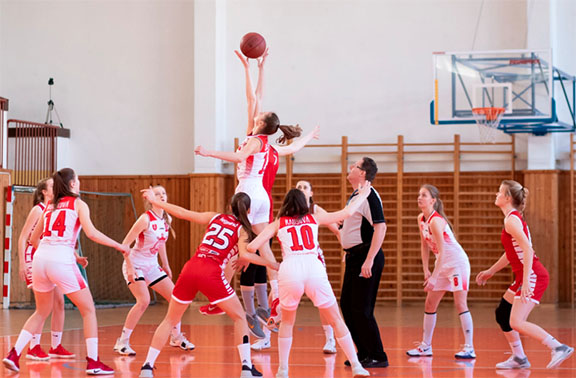Aug 26, 2021Studies Show Lower Cardiac Risk for Youth Athletes with COVID
An expert medical task force appointed by the National Federation of State High School Associations (NFHS) and the American Medical Society for Sports Medicine (AMSSM) reconvened this summer to update guidance from last summer for assessing – before sports participation – potential cardiac issues in high school student-athletes with prior COVID-19 infection.
The updated August 2021 guidance is included in the “Cardiopulmonary Considerations for High School Student-Athletes During the COVID-19 Pandemic: Update to the NFHS-AMSSM Guidance Statement.”
 “Large cohort studies suggest the risk of cardiac involvement in young athletes after COVID-19 is lower than initial concerns,” said Jonathan Drezner, M.D., director of the University of Washington Medicine Center for Sports Cardiology, past president of the AMSSM and co-chair of the NFHS-AMSSM task force.
“Large cohort studies suggest the risk of cardiac involvement in young athletes after COVID-19 is lower than initial concerns,” said Jonathan Drezner, M.D., director of the University of Washington Medicine Center for Sports Cardiology, past president of the AMSSM and co-chair of the NFHS-AMSSM task force.
“The evidence supports a symptom-based, tiered approach for cardiac testing post-COVID. Most young athletes with no symptoms or only mild illness do not require additional cardiac testing if they feel well as they return to exercise. Athletes with exertional symptoms after COVID-19, particularly chest pain, warrant a comprehensive evaluation to exclude cardiac involvement.”
Some of the key updates and recommendations from the task force include the following:
- Athletes with asymptomatic infections or only mild symptoms (e.g., common cold-like symptoms without fever, gastrointestinal symptoms, or loss of taste/smell) do not require additional cardiac testing unless clinically indicated. Athletes should be at least 3-5 days from the onset of symptoms or have a positive COVID-19 test before beginning an exercise progression.
- Additional cardiac testing (e.g., ECG, TTE, troponin) should be considered in athletes with moderate symptoms (e.g., fever >100.4°F, chills, flu-like syndrome for ≥2 days) or initial cardiopulmonary symptoms (e.g., chest pain, dyspnea, palpitations). Athletes with remote infections and moderate symptoms >3 months ago who never received a work-up but have returned to full activity without symptoms do not need additional cardiac testing. It is recommended athletes are at least 5-7 days from the onset of symptoms and that moderate symptoms are resolved before starting an exercise progression.
- All athletes with SARS-CoV-2 infections should be closely monitored for new cardiopulmonary symptoms as they return to exercise. Athletes who experience cardiopulmonary symptoms when they return to exercise (e.g., exertional chest pain, excessive dyspnea, syncope, palpitations, or unexplained exercise intolerance) should undergo additional cardiac testing (e.g., ECG, TTE, troponin) if not already performed and be evaluated by a cardiologist with consideration for a cardiac MRI or other investigations as indicated.
- The return-to-sport progression and timeline should be individualized and based on numerous factors including baseline fitness, severity and duration of COVID-19 symptoms, and tolerance to progressive levels of exertion. Most athletes will require a graded progression over at least a few days. Absent special indications, a prolonged return-to-sport timeline is not supported by evidence and further restriction from sports participation can contribute to detraining, increased injury risk, and mental health concerns.
- Additional history questions during a routine Preparticipation Physical Evaluation (PPE) should address whether the athlete had a COVID-19 illness. If yes, consider clarifying the symptoms and when they occurred, and if the athlete is experiencing any new symptoms with exercise, especially chest pain.
» ALSO SEE: 5 Tips to Warm-Up Effectively Before Workouts
“This update concerning cardiac issues in post-COVID-19 illness among high school and middle school student-athletes not only reflects the power of collaboration between two national sports medicine groups but also emphasizes the ultimate goal of these organizations, which is the safe return to sports and activities in student-athletes recovering from injuries or illness,” said Bill Heinz, M.D., former chair of the NFHS Sports Medicine Advisory Committee and co-chair of the NFHS-AMSSM task force.
‘Finally, the NFHS-AMSSM task force stresses once again “the importance of a well-rehearsed Emergency Action Plan (EAP) for every sport at every venue with clear access to an Automated External Defibrillator (AED).”
For more information regarding the NFHS’s COVID-19 guidance and protocols, click here.



